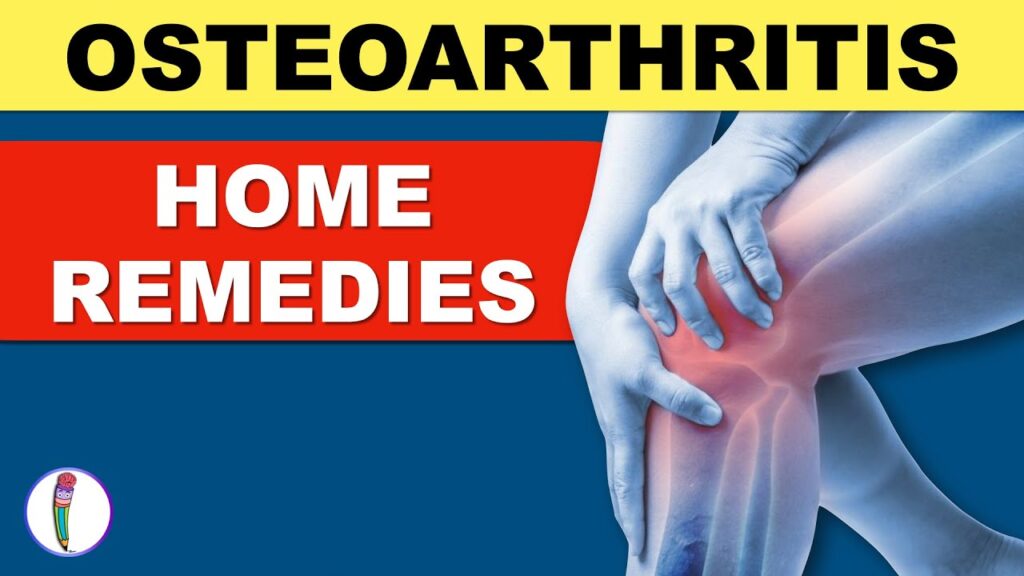Getting Active With Arthritis Remedies
Imagine waking up to a world where your joints don’t dictate your day, where the simple act of tying your shoes or climbing stairs doesn’t feel like an insurmountable challenge.
For millions battling arthritis, this dream can become a reality with the right blend of remedies and physical activity.
Getting Active With Arthritis Remedies is not just about enduring pain; it’s about reclaiming control over your life and rediscovering the joys of movement.
In this article, we will explore a holistic approach to managing arthritis through various remedies that promote activity rather than rest.
From scientifically-backed treatment options to practical lifestyle changes, you’ll find strategies designed to improve both mobility and quality of life.
Whether you’re newly diagnosed or have been navigating arthritis for years, our aim is to provide you with actionable insights that empower you to live actively despite the challenges arthritis presents.
So lace up those sneakers and join us on this journey towards greater freedom and vitality!
Arthritis is a common condition that affects millions of people around the world.
It is a chronic disease that causes inflammation and stiffness in the joints, leading to pain and discomfort.
The most common types of arthritis are osteoarthritis and rheumatoid arthritis, which can significantly impact an individual’s quality of life.
While there is no cure for arthritis, there are various remedies that can help manage the symptoms and improve mobility.
In recent years, there has been a growing interest in natural and alternative remedies for arthritis, as many individuals seek to avoid the potential side effects of traditional medications.
In this article, we will explore some of the most effective and scientifically-backed remedies for arthritis, from exercise and physical therapy to supplements and essential oils.
Whether you are newly diagnosed or have been living with arthritis for years, this article will provide you with valuable information and resources to help you get active and manage your symptoms effectively.
So, let’s dive into the world of arthritis remedies and discover how to live a more active and fulfilling life with this condition.
Table of Contents Getting Active With Arthritis Remedies
Exercise: A key to managing arthritis
Regular exercise is an essential component in managing arthritis and improving overall joint health.
Engaging in physical activity can help alleviate joint pain, increase flexibility and range of motion, and strengthen the muscles surrounding the affected joints.
Low-impact exercises, such as swimming, cycling, and yoga, are particularly beneficial as they minimize stress on the joints while still providing a challenging workout.
It is important to consult with a healthcare professional or a physical therapist to develop an exercise plan that is tailored to your specific needs and limitations.
By incorporating regular exercise into your daily routine, you can effectively manage arthritis symptoms and improve your quality of life.
Low-impact activities to try
Some low-impact activities to consider incorporating into your exercise routine include brisk walking, water aerobics, and tai chi.
Brisk walking is a simple yet effective way to get your heart rate up and improve cardiovascular health without putting excessive strain on your joints.
Water aerobics, performed in a pool, provides resistance for muscle strengthening while offering buoyancy that reduces impact on your joints.
Tai chi, a gentle form of martial arts, combines slow, flowing movements with deep breathing and meditation, promoting balance, flexibility, and stress reduction.
These activities can help maintain joint mobility and overall fitness while minimizing the risk of injury or exacerbating arthritis symptoms.
Remember to start slowly and listen to your body, gradually increasing intensity and duration as you build strength and confidence.
The importance of stretching regularly
Stretching regularly is a crucial component of any exercise routine, especially for individuals with arthritis.
It helps to improve flexibility, range of motion, and joint mobility, reducing stiffness and promoting overall joint health.
Regular stretching can also help to alleviate muscle tension and soreness, which is often experienced by those with arthritis.
By incorporating stretching exercises into your daily routine, you can enhance your body’s ability to perform various physical activities, protect your joints from injury, and improve your overall quality of life.
It is important to consult with a healthcare professional or a physical therapist to develop a stretching program tailored to your specific needs and limitations.
Remember to stretch all major muscle groups and hold each stretch for at least 15-30 seconds, without bouncing or forcing the movement.
Incorporating strength training for longevity
Strength training is another essential component to consider when aiming for longevity, especially for individuals with arthritis.
It may seem counterintuitive, but engaging in regular strength training exercises can actually help improve joint function and reduce pain associated with arthritis.
By gradually increasing the resistance or weight used during exercises, individuals can strengthen the muscles surrounding the affected joints, providing better support and stability.
This, in turn, can help alleviate stress on the joints and improve overall joint function.
However, it is important to approach strength training with caution and seek guidance from a qualified fitness professional or physical therapist who can design a program that is safe and appropriate for your specific needs and abilities.
By incorporating strength training into your routine, you can enhance your overall physical performance, maintain bone density, and promote long-term joint health.
Natural remedies for arthritis pain
With the goal of finding natural relief for arthritis pain, many individuals turn to alternative remedies that have shown promising results.
One such remedy is acupuncture, an ancient Chinese practice that involves the insertion of thin needles into specific points of the body.
Studies have indicated that acupuncture may help reduce pain and improve joint mobility in individuals with arthritis.
Additionally, herbal supplements such as turmeric, ginger, and boswellia extract have been recognized for their potential anti-inflammatory properties and may provide some relief from arthritis symptoms.
However, it is important to consult with a healthcare professional before incorporating any natural remedies into your treatment plan to ensure they are safe and suitable for your specific condition.
In conclusion, incorporating regular physical activity into your daily routine can greatly improve the symptoms of arthritis.
With proper guidance from a healthcare professional and a personalized exercise plan, individuals with arthritis can find relief and gain numerous health benefits.
It is important to remember that everyone’s journey with arthritis is unique, and it may take some trial and error to find the most effective remedies for each individual.
However, staying active and making healthy lifestyle choices can greatly improve the overall quality of life for those living with arthritis.
FAQ
What are some low-impact exercises or activities that can help improve mobility and reduce pain for individuals with arthritis?
Low-impact exercises such as swimming, cycling, yoga, tai chi, and walking can help improve mobility and reduce pain for individuals with arthritis.
These activities are gentle on the joints while still providing a good workout, helping to increase flexibility, strengthen muscles, and reduce stiffness.
Additionally, activities like water aerobics and gentle stretching can also be beneficial for improving range of motion and overall joint health for those with arthritis.
It is important to consult with a healthcare provider before starting any new exercise regimen to ensure it is safe and appropriate for your individual needs.
Are there any specific dietary recommendations or supplements that can support joint health and reduce inflammation for individuals with arthritis?
Individuals with arthritis can benefit from a diet rich in anti-inflammatory foods like fatty fish, fruits, vegetables, nuts, and whole grains.
Supplementing with omega-3 fatty acids, glucosamine, chondroitin, and turmeric may also help reduce inflammation and support joint health.
Additionally, maintaining a healthy weight through proper nutrition and regular exercise can alleviate stress on the joints and improve overall joint health.
It is important to consult with a healthcare provider or a registered dietitian before making any significant dietary changes or starting new supplements.
How can incorporating mindfulness practices, such as yoga or meditation, help manage stress and improve overall well-being for individuals with arthritis?
Incorporating mindfulness practices like yoga or meditation can help individuals with arthritis by reducing stress, promoting relaxation, improving mental well-being, and increasing flexibility and mobility in affected joints.
Meditation can also enhance pain management and foster a positive mindset, which can ultimately improve overall quality of life for those living with arthritis.
By cultivating mindfulness through these practices, individuals can better cope with the physical and emotional challenges of arthritis, leading to reduced inflammation, increased self-awareness, and a greater sense of peace and well-being.
What are some alternative therapies, such as acupuncture or massage, that may provide relief for arthritis symptoms?
Alternative therapies such as acupuncture, massage therapy, yoga, tai chi, mindfulness meditation, and dietary supplements like turmeric or fish oil have shown promise in providing relief for arthritis symptoms by reducing inflammation, improving range of motion, and alleviating pain.
It’s important to consult with a healthcare provider before starting any new therapy to ensure its safety and effectiveness for your specific condition.
How can individuals with arthritis safely increase their physical activity levels without exacerbating their symptoms?
Individuals with arthritis can safely increase physical activity by starting with low-impact exercises such as walking, swimming, or cycling.
They should gradually increase intensity and duration, listen to their body, and modify activities to reduce stress on joints.
Incorporating strength training, stretching, and warm-up exercises can improve flexibility and support joint health.
Consulting with a healthcare provider or a physical therapist for personalized guidance and monitoring symptoms is essential to ensure a safe and effective exercise routine.
Staying hydrated, using proper equipment, and taking rest days are also crucial in managing arthritis symptoms during physical activity.







